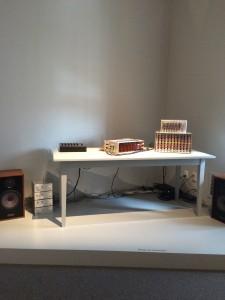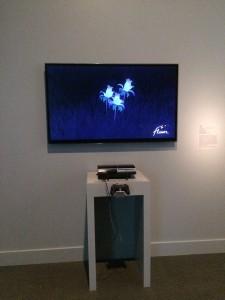
Stepping into the exhibition space of the “Watch This! Revelations in Media Art” exhibition at the Smithsonian American Art Museum, one is greeted by a low hum and a constant thrumming. Unlike most other museum exhibitions, which are more often than not cloaked within a hushed reverie and the murmuring of visitors, this exhibition promises an exciting blend of light, sound and media forms as it explores the interdependence of art and media through the medium of technology.
Put together by Michael Mansfield, curator of film and media arts, the exhibition offers an insight into the creative revolution sparked by developments in science and technology. To keep up with the dazzling array of technologies and electronic phenomena that the past few decades have introduced into our world, society has evolved accordingly at an increasingly hectic pace. Similarly, technological development has uncovered a new frontier for artists to explore, and several artists have fully embraced the shift in zeitgeist to produce innovative and genre-defying works of art.
The organizer and now home of this exhibition, the Smithsonian American Art Museum is not one to shy away from such changes in the art landscape, but rather it has chosen to embrace these changes and encourage development in the field of media arts. For instance, it has gone to great lengths to acquire and build a fine collection of contemporary works, including the archive of Nam June Paik’s artworks, as well as hire dedicated curators in the field. Viewing the exhibition, the museum’s painstaking efforts have clearly paid off, for the result is a thought-provoking and conceptually interesting exhibition.
Postmodernist in sensibility, the exhibition is arranged according to conceptual and material groupings. Standout works in the collection of 44 works exhibited include an early rendition of Nam June Paik’s “TV Clocks,” a collection of 11 fixed-image televisions each featuring a single line in different positions across the screen. Time is thus presented not as sand in an hourglass, or seconds ticking away on a clock, but as a sculptural electronic object.
Another pair of artworks worth examining within the exhibition are two video games, titled “Flower” by Jenova Chen and Kellee Santiago and “Halo 2600” by Ed Fries. Both represent opposite ends of the spectrum with regard to video game graphics. “Flower” is a delicately rendered video game which makes use of crisp visuals to place the participant in the role of the wind as they interact with the landscape and surroundings, while the environment responds to the actions of the players. Conceived as an “interactive poem,” “Flower” is an unconventional work, which arguably blends artistic sensibilities with the video game genre to a level previously unseen.
On the other hand, “Halo 2600” is a fun reimagining of the popular game HALO retooled to be played on a vintage Atari VCS, in all its joystick-and-red-button glory. The artist and programmer Ed Fries was particularly inspired by the sentiment that severe limitations precede creativity, and hence decided to use HALO as a starting point to play around with the boundaries of obsolete technology and the ghosts of video games past. Coupled together with “Flower” as artworks that visitors can actually fully interact with, the two works serve to challenge preconceived notions about the legitimacy of the medium of video games as art.
“Text Rain” by Camille Utterback and Romy Achituv was a rather startling discovery; while walking past an innocuous-looking wall where a holographic display of animated text (from Evan Zimroth’s poem “Talk, You”) was raining down, it soon became apparent that the viewer is meant to become a part of the artwork. That is, a hidden camera would capture your reflection and project it back onto the wall, creating a disconcerting effect where you would appear to be inhabiting the virtual space with words raining down on you, while simultaneously standing outside of it.
A particularly interesting feature of the technology on display at the exhibition was that the televisions used in most of the exhibits were either analog televisions or the boxy television sets that were the norm before LED flat screens took over our living rooms. Hence, while the art within the exhibit was certainly contemporary and boundary-pushing, the use of now-obsolete electronics as technological mediums was a somewhat nostalgic retro throwback to older times.
In addition to the numerous artworks on display, the exhibition has also included archival materials related to the artworks to be displayed as well, ranging from schematic diagrams to

correspondence between the artists. Besides offering a peek into the artistic process, these accompanying materials also illustrate the main idea of the exhibition: to break down the boundaries between art and artist and the fourth wall between artist and audience, and the dissemination of art across various mediums.
“Watch This! Revelations in Media Art” is worth visiting even if one is not inclined to visiting more conventional art exhibitions, by virtue of the fact that it so skillfully engages technology and media to create artworks that defy conventional recognitions of what art should be like. The exhibition is on view at the Smithsonian American Art Museum until September 7.













